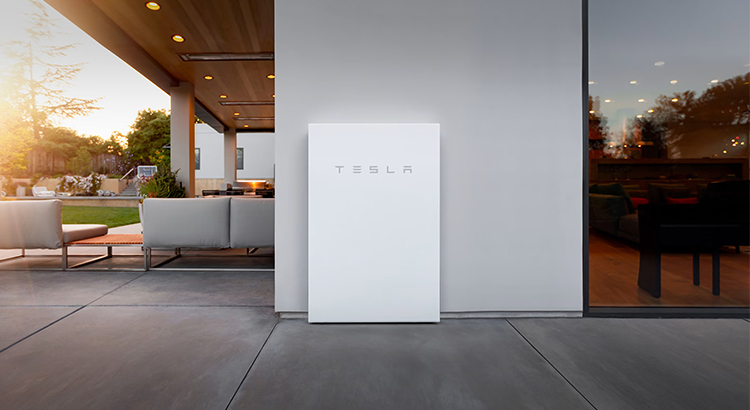Tesla Powerwall 2: A Complete Buyers Guide

Since its entry in 2015 with the groundbreaking Tesla Powerwall, Elon Musk’s Tesla has made significant progress in the energy storage market. With a focus on innovation and sustainability, Tesla Australia has continued to refine its offerings, introducing the Tesla Powerwall 2 to cater to the growing demand for residential battery solutions.
This article will explore the various aspects of the Tesla Powerwall, from its cost and price history to its technical specifications, chemistry, backup gateway, and mobile app functionality.
How Much Does the Tesla Powerwall 2 Cost?
A crucial consideration for potential buyers is the cost of the Tesla Powerwall 2. Initially priced at $9,000 in 2017, it has undergone fluctuations over the years. The most recent change in January 2024 brought the price to $10,400, post a $750 rebate. Understanding the cost dynamics is vital for those exploring sustainable energy options for their homes.
Tesla Powerwall 2 Price Change History (excluding Gateway):
| Date | Wholesale Price | Change |
| 2017 | $9,000 | |
| 2018 – February | $9,600 | +$600 |
| 2018 – October | $12,250 | +$2,650 |
| 2019 – July | $11,700 | -$550 |
| 2020 – October | $12,500 | +$800 |
| 2021 – February | $13,300 | +$800 |
| 2021 – May | $12,750 | -$550 |
| 2022 – March | $13,700 | +950 |
| 2022 – May | $14,650 | +$950 |
| 2022 – October | $16,500 | +$1,850 |
| 2023 – February | $14,599 | -$1,901 |
| 2023 – April | $12,900 | -$1,699 |
| 2023 – June | $12,100 | -$800 |
| 2023 – August | $11,350 (after rebate) | -$750 |
| 2023 – November | $9,650 (after rebate) | -$1,700 |
| 2024 – January | $10,400 | +$750 |
The Chemistry of a Tesla Powerwall 2
The Tesla Powerwall 2 relies on Lithium-ion technology with cathodes composed of Lithium, Cobalt, Nickel, and Manganese (LiNiMnCoO2). Understanding the battery’s chemistry is essential for assessing its performance and longevity.
The Powerwall 2 offers a 10-year warranty and provides 5kW of output power, making it suitable for larger residential homes or commercial applications when daisy-chained.
Tesla Powerwall 2 Backup Gateway
The Tesla Powerwall 2 is complemented by the ‘Gateway,’ an additional hardware piece enabling the system to function as backup power during outages. This prevents power from being sent back into the grid, ensuring safety for electrical workers.
While adding $1,700 to the overall cost, the Gateway is a crucial component for uninterrupted power supply during emergencies.
Pros and Cons of the Tesla Powerwall 2Pros:
- Outstanding specifications, boasting a 100% depth of discharge.
- Backed by the reputable and high-profile Tesla company with a robust warranty offer.
- User-friendly mobile app and interface enhance ease of use.
Cons:
- One of the most expensive battery solutions in the market.
- Limited supply may result in waiting periods for installation.
- Not designed for 3-phase applications; connectivity limited to a single phase.
Tesla Powerwall 2 Warranty for Australian Customers
For Australian customers, Tesla offers both time-based and throughput-based warranties. With a 10-year time warranty and specific coverage for throughput based on usage, Tesla ensures customer satisfaction and addresses potential concerns related to defects and degradation.
Tesla Powerwall 2 Performance Specifications
| AC Voltage | 230V |
| Feed in Type | Single-phase |
| Grid Frequency | 50 Hz |
| Usable Energy | 13.5 kWh |
| Depth of Discharge | 100% |
| Real Power | Max continuous 5kW (charge & discharge) |
| Power Factor Output Range | +/- 1.0 (adjustable) |
| Internal battery DC Voltage | 50V |
| Round Trip Efficiency | 90% |
| Warranty | 10 Years |
Tesla Mobile App Functionality
The Powerwall experience is improved by Tesla’s intuitive mobile app, which provides real-time performance data and operation insights. The app allows users to switch between modes, such as Back-Up Only, Self-powered, and Time-based Control, providing flexibility and control over energy usage.
Wrapping Up
At the forefront of household battery solutions, the Tesla Powerwall 2 seamlessly blends sustainability and state-of-the-art technology. Prospective customers must understand the product’s pricing, chemistry, warranty, and performance requirements. As Tesla prepares to launch the Powerwall 3 in 2024, the Powerwall 2 remains a compelling choice for those seeking a reliable and efficient energy storage solution.
